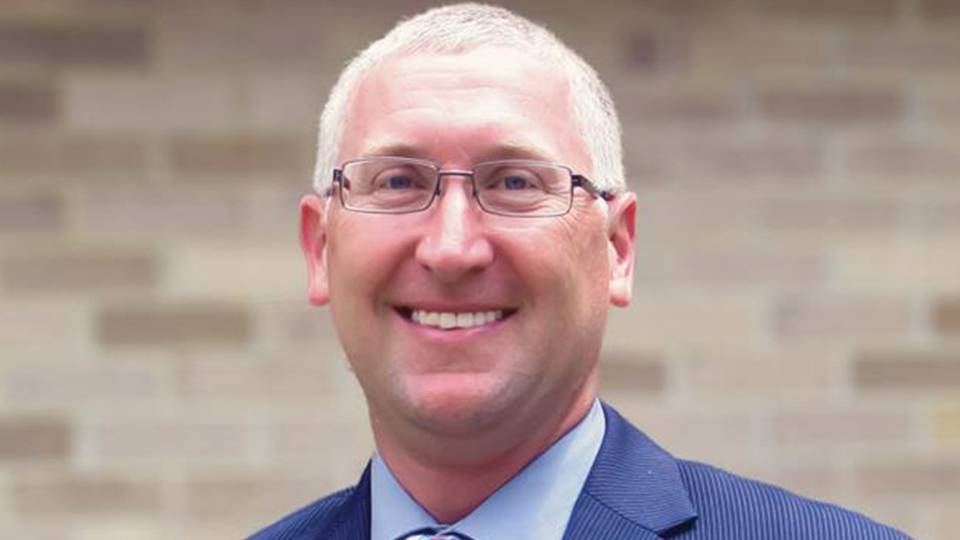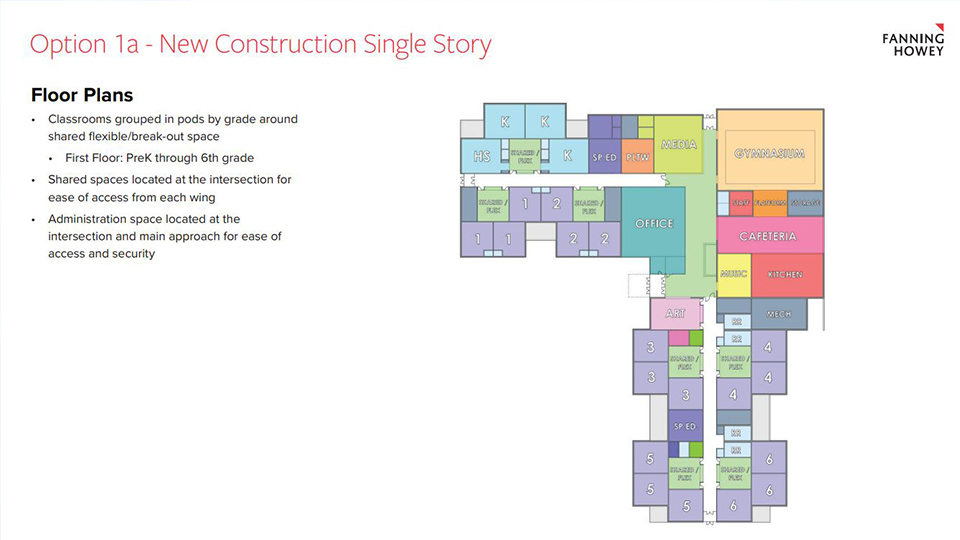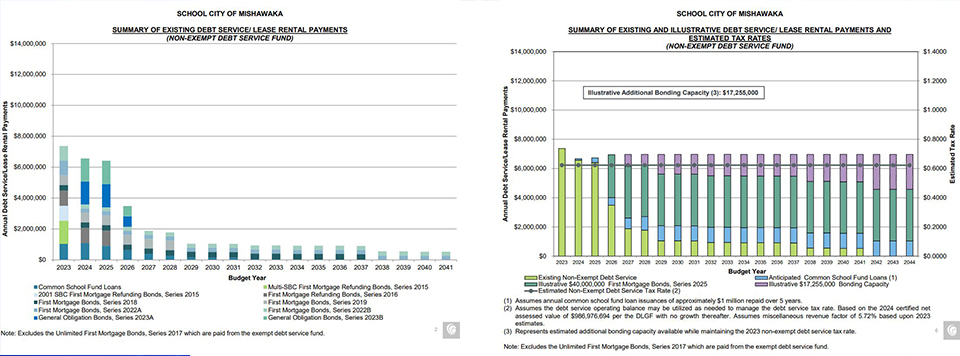A new elementary school? A Q&A with Mishawaka Superintendent Theodore Stevens
Subscriber Benefit
As a subscriber you can listen to articles at work, in the car, or while you work out. Subscribe Now
Last week, school board members and families in the School City of Mishawaka heard proposals to address longstanding issues in the district’s Hums Elementary School.
One proposal suggests renovating the building one section at a time while students attend class and the other suggests building something new on the same property, bringing what could be the Mishawaka district’s first new elementary school in 20 years.
Inside INdiana Business talked to Superintendent Theodore Stevens, a former Mishawaka assistant superintendent who rejoined the district last year after a four-year stint as superintendent of LaPorte County’s South-Central schools.
Stevens answered common questions he’s heard about the proposal and explained how the district plans to fund a potential project just shy of $40 million without raising taxes and coming off of a spring referendum campaign to help fund certain teacher and staff salaries.
What is Hums like today?
Hums was built in 1973, which puts it right about 50 years old and, conveniently, next year, we’re going to celebrate the 100th year of Mishawaka High School and the year after that, the 100th year of LaSalle Elementary School.
Part of the challenge that we have is building techniques have changed through time and, not to denigrate anybody that built the building in 1973, but the way it was built was different than Mishawaka High School and LaSalle that are approaching 100 years old. One of the biggest problems that they had when they built it in the ’70s, education at that time was big into this open concept learning where you’re in first grade and I’m in sixth grade, but we’re all sort of in this open-air learning environment which, fast forward to today, and even fast forward 30 years ago, we weren’t doing that anymore. We’re in individual classrooms.
What they did through time, they started with that open concept, and then we built walls in Hums. Well, there were problems because now your heating and cooling is set up differently. It wasn’t designed for that to begin with. It’s just not an ideal academic environment for learning. It’s not as quiet as you’d like it to be due to that construction piece. So, that piece is probably the cornerstone of really why we’re looking at this.
Close second to that, where it was built at the time, and when it was built, we believe it was probably the only thing out there on the east side of Mishawaka. Since that time, the neighborhood has been built up around it, which is great, but water and drainage has become an issue. At times when it rains quite a bit, we have water that backs up into that building, because it was not necessarily built high at the time, and when other homes came in, they were built higher. Now, other water’s coming in and making that water table in our area a little bit higher. It’s probably good for neighbors, maybe not so good for us.
So you have the water issue, which is problematic, and then a tight second becomes the safety component. You have that open concept piece. Yes, we put up walls, but then because of how those walls were put in, it’s very difficult to have doors. So now, if we have, unfortunately, an active shooter or something of that nature and we want to lock folks down, we don’t have doors to do that. Now, we can lock down sort of the whole student wing, but if somebody’s already in that, that’s a problem as well.
So those are probably the three touchstones that I like to point out to constituents. A few told us here the other night at our open town hall — one was a board member in 2000 and she had said the superintendent then had identified that this was an issue we need to address and here we are 23 years later. When I was here the first go-around, administration was talking about it. We’re just at a point where I want to believe this board wants to try to be part of a solution versus sort of kicking that can one more time.
What options are you considering for Hums?
One option could be renovation to the existing space. Just like if you were to buy an older home and you want to renovate it, you can go through, you can gut it and redo it all. Our friends at Fanning Howey, which is the architectural firm that we partnered with to help us study this, created a proposal and that proposal costs $34.3 million, almost $34.4 million, to do a renovation.
Part of the challenges we have with that renovation is then you’re going to have to have portable classrooms, and you’re changing the academic learning environment for students for anywhere between 26 to 30 months on the construction timeline. And, I know a piece that some folks have been concerned about is even if you do that renovation and you gut it and add walls to the ceiling, do the doors and get the safety piece squared away, is that going to address the water issue? So that really has folks at a pause in terms of remodeling, renovations and additions.
The second option is to build a new building. A multi-story, new building is a little bit cheaper. It’s $37.8 million, almost $37.9 million. The thought process with a new building is, certainly, the elevation immediately can be built higher, which will certainly help the water drainage issue. Then you get all the safety, the security, the other components that you need obviously in a new building as well. And, the thought process again from Fanning Howey, if the board decided they wanted to move forward with a new building option, you can do a new building as a single story, or you can do a new building as a multi-story. I think the multi-story is about a million dollars cheaper. To do two stories versus one, it takes up less physical ground space.
Both options could be built right beside the existing building, fairly close. Kids would continue to go to the old Hums. They build a new one, and once it’s done — hopefully, it’s done in a summer — then, in a new school year, (the kids) start in the new (building), we tear down the old and away you go. That would probably have the least amount of disruption to the education of our students, but it does cost a tick more.
What educational changes could a new building bring?
One thing that I know that we have in many of our other buildings is learning pods, where we’re grouping grade levels together. Your kindergarten and your Head Start group, they’re together. First grade is together. Second grade is together. And, what’s neat about their architectural design, each one of those areas has a common space. So, then, you could bring either small groups together or bring those three first grade classrooms together for remediation help. You could do STEM activities. You can do learning extension activities, the whole gamut of things can be done very in very close proximity without having to disrupt other folks around you.

The other component that this does and offers — and this is more on the safety end than on the academic end — is now if somebody were to come into this building and get past the office, which I think would be difficult, now you’d almost have two series of doors. They’d have to get through that common space to get to the first grade classroom, then get into another door to get into the specific classroom, which is what we’re looking for. We’re looking to keep our students and our staff as protected as possible to buy time to get the assistance that we need.
Those are some of the main academic pieces and the safety pieces that would really be handy. And again, part of that clustering of classrooms together by grade levels is, we’re able to achieve that in a number of our other elementary schools now and we’re having great success with that, so to be able to do that and even probably do it a tick better, is a big positive for us.
Would a new building be bigger? Could you take more students?
Yep, absolutely. This recommendation from Fanning Howey would have about 500 students. Hums today has around 350 students. So yes, we’d like to over-build that, but over-build it intentionally because the Reverewood area, which is where Hums is, is one of the few areas of Mishawaka where families are building new homes.
We have families building new homes. We have growth in that part of the school corporation which, of course, is good for the school corporation, and hopefully good for local businesses, as well, as folks come to the greater Mishawaka area to work, live and play. They may choose to live here and we want to be their choice in education as well.
What is your timeline from here?
The next step would be, does the board want to take action on this moving forward? And, I would say, if they want to take action on this, to get the ball rolling, we’ll need to do that here sometime second semester between January and the end of the school year. What does that look like? That could be a couple of different things. The board could simply approve a resolution that they want to move forward with building a Hums Elementary School. That certainly would not be a bad thing, but the more important thing would be to approve a relationship with Baker Tilly to get the financial house in order on the bonding so that we can have the money to then hire an architect, construction manager, and all the fun stuff that comes with that.
That came up in the public town hall as well, sort of this idea of ‘Well, when are you going to have teachers’ input?’ Well, we’re at the very, very, very early stages, like super early at this point in time. But, again, if the board approved that, got that ball rolling a little bit, I think you could potentially be looking at construction in 2025-ish. With the idea — it may be optimistic — of school year 2026-2027 having a new building in play.
At this point, are you leaning toward new construction or renovation?
That probably technically has yet to be determined, but from the superintendent’s point of view, I would feel comfortable telling the board that the new construction makes the most plausible sense from the academic performance and student experience point of view versus the remodeling where you’re disrupting their day for almost two and a half years. I certainly know that that’s more money and if the board were to decide otherwise, we’re certainly going to be able to work with them to achieve what they want to achieve.
How much will a project cost and how will you finance it?
That’s where we lean heavily on our municipal advisor friends at Baker Tilly. I like to call this in layman’s terms like when you have a debt capacity in your mortgage, your ability to borrow. In a school corporation, it’s not a mortgage, but you have a bond and what they call bond capacity, what you’re able to bond out so you have monies to do larger capital expenditures.
The operating referendum was primarily people, very people heavy. In fact, I would say it was all people from operating, because that’s what we needed to operate the school. This would be on the capital side, and as Baker Tilly pointed out, we have some debt that falls off that gives us a pretty substantial amount of bond capacity to be able to pay for this project.

We asked them to come up with the calculation for ‘If we were to bond out $40 million, what would that look like and can it be done without raising taxes on the taxpayer?’ That answer is yes, we can do that. You could bond $40 million in 19 years very similar to the way you pay off your mortgage or you pay off your car. That’s how we’re able to achieve that. And, I know that’s a component that has been important to our board. I’m very cognizant of the fact that we just went out and asked the public to renew a referendum. We’re not trying to saddle the taxpayer with additional taxes on behalf of the school corporation. We’re not talking about a capital referendum with this project.
But, another constituent did ask, ‘Well, does that mean you would never ask for a capital referendum in the future?’ Well, That’s not necessarily the case. I’m not making that type of promise because, as I mentioned, we have a couple buildings that are approaching 100 years old and we do have other capital expenditures and capital needs. But with this specific project, we’re looking to keep within the taxing authority that we have and not add anything new to the taxpayer.
Is there anything else you want people to know?
Another patron had asked about ‘Well, look, if you’re over-building, are you looking to combine buildings? Are you looking to make this a middle school? Is there another sort of thought process behind that?’ And, as I said then, certainly the build up of the neighborhood around Hums is item 1A. That is something that we’re certainly cognizant of and we want to make sure that we have the capacity and that we’re ready for that if people continue to build and live out there. It’s a wonderful thing.
With that said, we do have other buildings that are aging. Is there an opportunity that you could combine another elementary school with Hums? It’s possible down the road. Next door, Twin Branch (Elementary) has about 300-some-odd kids. In simple math, now you’re talking 600 kids which, if this is 500, you could do that. But, you’re going to have to add on to the new one if you do that down the road. It does give you that opportunity to do that, but that does not mean that’s what we’re gonna do.
The one option that we’re really not looking at doing is making this a second middle school in Mishawaka. My first go-around as assistant superintendent, we studied that fairly aggressively and there’s just a lot of logistical issues to having two middle schools in Mishawaka. That’s not to say that couldn’t happen if we had this huge population boom, but given where we’re at right now, and if we can continue to maintain around the 5,000 student mark (districtwide), I just don’t see an option where we’re going to make this another middle school.
